The SUV segment continues to evolve, with manufacturers like Hyundai and Mazda producing versatile and innovative models that cater to a range of drivers. This comparison of the Hyundai Santa Fe and the Mazda CX-80 highlights the strengths and attributes of each offering, providing potential buyers with a comprehensive overview to aid their decision-making.
Hyundai Santa Fe vs Mazda CX-80 – Which one offers the better deal?
Both models have their strengths – but which one suits you more?
Compare performance, efficiency, price and space directly: Hyundai Santa Fe or Mazda CX-80?
Powertrain and Performance
The Hyundai Santa Fe comes with a choice of powertrains that includes both full hybrid and plugin hybrid options, delivering an output of 215 to 253 HP. The Santa Fe also impresses with torque figures of up to 367 Nm, making it capable for both urban and rugged terrains. Its automatic gearbox provides a smooth driving experience whether navigating busy streets or taking on longer journeys. Acceleration from 0 to 100 km/h ranges between 9.3 to 9.8 seconds, indicative of its respectable performance.
In contrast, the Mazda CX-80 pushes performance benchmarks higher with its available diesel MHEV and plugin hybrid engines, boasting a remarkable output of up to 327 HP and torque peaking at an impressive 550 Nm. This enables the CX-80 to achieve acceleration from 0 to 100 km/h in just 6.8 seconds, positioning it as a sportier contender in this comparison. The CX-80's all-wheel-drive configuration enhances traction and stability, appealing to those seeking adventure without compromising on performance.
Efficiency and Economy
When it comes to efficiency, the Hyundai Santa Fe shines with a fuel consumption rate ranging from 1.7 to 6.9 L/100km depending on the selected powertrain, while achieving a CO2 emissions rating as low as 145 g/km. Its electric range of 54 km for the hybrid models allows for short local trips without relying heavily on the combustion engine.
The Mazda CX-80 edges ahead in the efficiency race with fuel consumption figures as low as 1.6 L/100km in its plugin hybrid variant, along with CO2 emissions starting at a mere 35 g/km. With an electric range of up to 60 km, it provides a competitive solution for eco-conscious drivers looking to reduce their carbon footprint.
Interior Space and Comfort
Both vehicles offer spacious interiors, accommodating 5 to 7 passengers. The Hyundai Santa Fe provides a trunk capacity that ranges from 621 to 711 liters, making it ideal for families and road trips. Its design focuses on comfort with user-friendly technology and a comforting cabin feel, catering to both driver and passengers.
On the other hand, the Mazda CX-80 features a slightly larger exterior dimension with a length of 4995 mm and an official trunk capacity of 258 liters. Although it has less cargo space than the Santa Fe, the stylish design and high-quality materials used in the CX-80 contribute to a premium interior experience, showcasing Mazda's commitment to craftsmanship. The CX-80 also includes several modern technological advancements and driver assistance systems that enhance comfort and safety.
Safety Features and Innovations
Safety is paramount in both SUVs. The Hyundai Santa Fe is packed with advanced driver assistance features such as lane keeping assist, adaptive cruise control, and a comprehensive set of airbags. These elements provide peace of mind for families and individual drivers alike.
The Mazda CX-80 doesn't fall short either, offering a suite of safety technologies such as adaptive LED headlights, blind-spot monitoring, and lane departure warning, which work in tandem to create a safe driving atmosphere. Both models strive to ensure high safety ratings, giving buyers confidence in their investment.
Conclusion: Making the Choice
Choosing between the Hyundai Santa Fe and Mazda CX-80 ultimately comes down to personal preferences and priorities. If you are seeking a hybrid option with excellent efficiency and a spacious interior, the Santa Fe may catch your eye. Conversely, for those enamored with high performance and striking design, the Mazda CX-80 proves to be a compelling alternative.
With features tailored to frenetic urban lifestyles and tranquil road trips alike, both vehicles present an array of innovative options that make them worthy contenders in the competitive SUV market. Test driving each model will ultimately help potential buyers make the most informed decision.
Here’s where it gets real: The technical differences in detail
Costs and Efficiency:
Looking at overall running costs, both models reveal some interesting differences in everyday economy.
Mazda CX-80 has a barely noticeable advantage in terms of price – it starts at 48200 £, while the Hyundai Santa Fe costs 51200 £. That’s a price difference of around 3000 £.
Fuel consumption also shows a difference: Mazda CX-80 manages with 1.60 L and is therefore minimal more efficient than the Hyundai Santa Fe with 1.70 L. The difference is about 0.10 L per 100 km.
As for range, the Mazda CX-80 performs somewhat better – achieving up to 61 km, about 7 km more than the Hyundai Santa Fe.
Engine and Performance:
Power, torque and acceleration are the classic benchmarks for car enthusiasts – and here, some clear differences start to show.
When it comes to engine power, the Mazda CX-80 has a distinct edge – offering 327 HP compared to 253 HP. That’s roughly 74 HP more horsepower.
In acceleration from 0 to 100 km/h, the Mazda CX-80 is clearly perceptible quicker – completing the sprint in 6.80 s, while the Hyundai Santa Fe takes 9 s. That’s about 2.20 s faster.
In terms of top speed, the Mazda CX-80 performs somewhat better – reaching 219 km/h, while the Hyundai Santa Fe tops out at 196 km/h. The difference is around 23 km/h.
There’s also a difference in torque: Mazda CX-80 pulls distinct stronger with 550 Nm compared to 380 Nm. That’s about 170 Nm difference.
Space and Everyday Use:
Beyond pure performance, interior space and usability matter most in daily life. This is where you see which car is more practical and versatile.
Both vehicles offer seating for 7 people.
In curb weight, Hyundai Santa Fe is somewhat lighter – 1920 kg compared to 2131 kg. The difference is around 211 kg.
In terms of boot space, the Hyundai Santa Fe offers significantly more room – 711 L compared to 258 L. That’s a difference of about 453 L.
In maximum load capacity, the Hyundai Santa Fe performs barely noticeable better – up to 2032 L, which is about 61 L more than the Mazda CX-80.
When it comes to payload, Hyundai Santa Fe slight takes the win – 665 kg compared to 650 kg. That’s a difference of about 15 kg.
Who comes out on top?
Overall, the Mazda CX-80 shows itself to be dominates this comparison and secures the title of DriveDuel Champion.
It convinces with the more balanced overall package and proves to be the more versatile choice for everyday use.
 @ Mazda Motor Corporation
@ Mazda Motor Corporation
Mazda CX-80
Hyundai Santa Fe
The Hyundai Santa Fe offers a refined blend of style and functionality, making it a strong contender in the SUV market. Its modern interior, combined with advanced technology and comfort features, creates an inviting and practical driving environment. With its sleek design and robust performance, the Santa Fe is well-suited for both urban commutes and family adventures.
details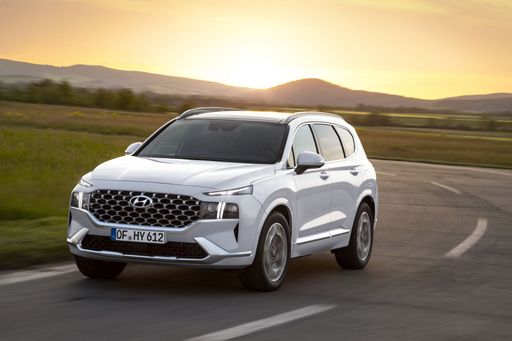 @ Hyundai Motor Company
@ Hyundai Motor Company
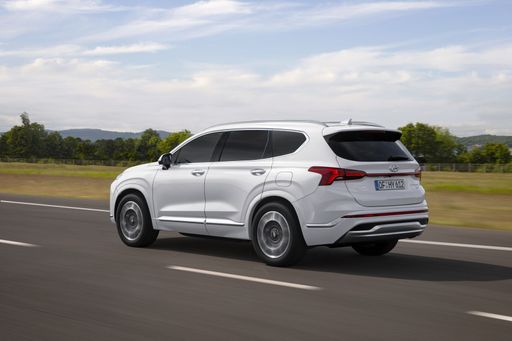 @ Hyundai Motor Company
@ Hyundai Motor Company
 @ Hyundai Motor Company
@ Hyundai Motor Company
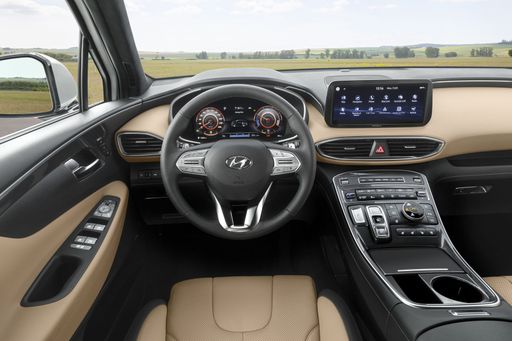 @ Hyundai Motor Company
@ Hyundai Motor Company
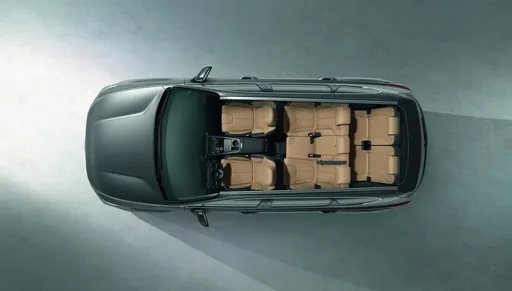 @ Hyundai Motor Company
@ Hyundai Motor Company
Mazda CX-80
The Mazda CX-80 exemplifies a perfect blend of sophisticated design and dynamic performance, making it a standout model in the SUV market. With its sleek lines and contemporary interior, it delivers a sense of luxury typically reserved for higher-end marques. This model also offers impressive handling and a comfortable ride, ensuring an enjoyable driving experience in various conditions.
details @ Mazda Motor Corporation
@ Mazda Motor Corporation
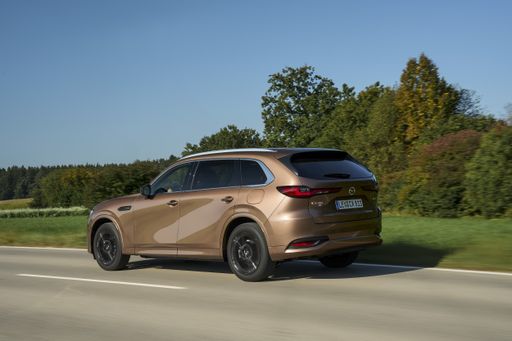 @ Mazda Motor Corporation
@ Mazda Motor Corporation
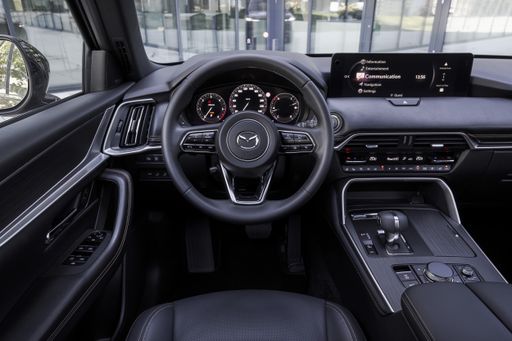 @ Mazda Motor Corporation
@ Mazda Motor Corporation
 @ Hyundai Motor Company
@ Hyundai Motor Company
|
 @ Mazda Motor Corporation
@ Mazda Motor Corporation
|
|
|
|
Costs and Consumption |
|
|---|---|
|
Price
51200 - 58400 £
|
Price
48200 - 60200 £
|
|
Consumption L/100km
1.7 - 7.1 L
|
Consumption L/100km
1.6 - 5.8 L
|
|
Consumption kWh/100km
-
|
Consumption kWh/100km
-
|
|
Electric Range
54 km
|
Electric Range
61 km
|
|
Battery Capacity
-
|
Battery Capacity
-
|
|
co2
38 - 160 g/km
|
co2
35 - 151 g/km
|
|
Fuel tank capacity
47 - 67 L
|
Fuel tank capacity
70 - 74 L
|
Dimensions and Body |
|
|---|---|
|
Body Type
SUV
|
Body Type
SUV
|
|
Seats
5 - 7
|
Seats
7
|
|
Doors
5
|
Doors
5
|
|
Curb weight
1920 - 2165 kg
|
Curb weight
2131 - 2240 kg
|
|
Trunk capacity
621 - 711 L
|
Trunk capacity
258 L
|
|
Length
4830 mm
|
Length
4995 mm
|
|
Width
1900 mm
|
Width
1890 mm
|
|
Height
1720 mm
|
Height
1714 mm
|
|
Max trunk capacity
1942 - 2032 L
|
Max trunk capacity
1971 L
|
|
Payload
560 - 665 kg
|
Payload
649 - 650 kg
|
Engine and Performance |
|
|---|---|
|
Engine Type
Plugin Hybrid, Full Hybrid
|
Engine Type
Plugin Hybrid, Diesel MHEV
|
|
Transmission
Automatic
|
Transmission
Automatic
|
|
Transmission Detail
Automatic Gearbox
|
Transmission Detail
Automatic Gearbox
|
|
Drive Type
All-Wheel Drive, Front-Wheel Drive
|
Drive Type
All-Wheel Drive
|
|
Power HP
239 - 253 HP
|
Power HP
254 - 327 HP
|
|
Acceleration 0-100km/h
9 - 9.3 s
|
Acceleration 0-100km/h
6.8 - 8.4 s
|
|
Max Speed
180 - 196 km/h
|
Max Speed
195 - 219 km/h
|
|
Torque
367 - 380 Nm
|
Torque
500 - 550 Nm
|
|
Number of Cylinders
4
|
Number of Cylinders
4 - 6
|
|
Power kW
176 - 186 kW
|
Power kW
187 - 241 kW
|
|
Engine capacity
1598 cm3
|
Engine capacity
2488 - 3283 cm3
|
General |
|
|---|---|
|
Model Year
2024 - 2025
|
Model Year
2024
|
|
CO2 Efficiency Class
B, E, F
|
CO2 Efficiency Class
B, E
|
|
Brand
Hyundai
|
Brand
Mazda
|
What drivetrain options does the Hyundai Santa Fe have?
Available configurations include All-Wheel Drive or Front-Wheel Drive.
The prices and data displayed are estimates based on German list prices and may vary by country. This information is not legally binding.
